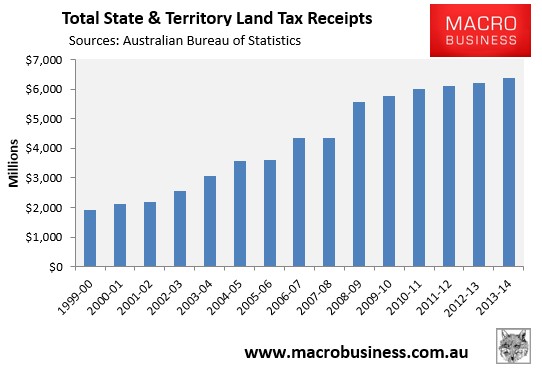The Australian Bureau of Statistics (ABS) last week released taxation statistics for the 2013-14 calendar year, which provided a key insight into why state budgets have generally been improving.
According to the ABS, total state and territory government stamp duty receipts on housing transfers surged by 24% nationally in 2013-14 to $15,971 million, with receipts also 12% above the previous peak of $14,289 million recorded in 2007-08 (see next chart).
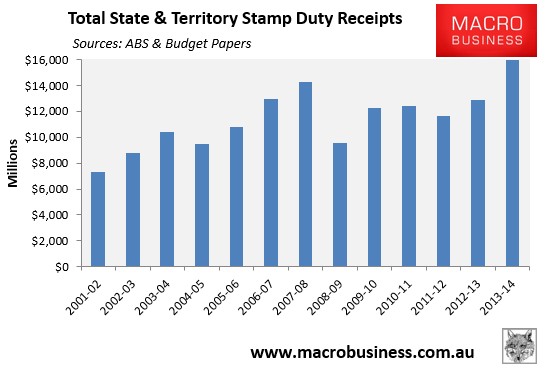
However, while there was an obvious surge in stamp duty receipts nationally, there remains widespread divergence between jurisdictions.
Below is a summary of stamp duty receipts at the individual state and territory levels.
New South Wales:
Stamp duty receipts surged by 32% in 2013-14 to an all-time high $6,045 million:
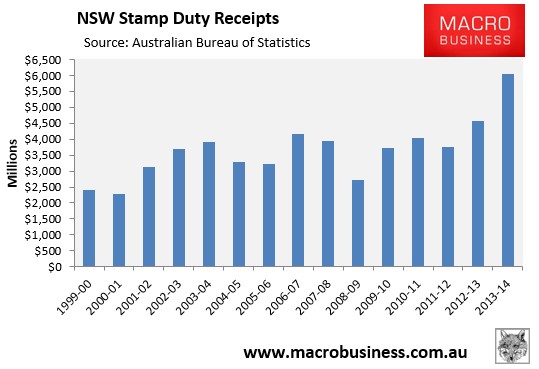
Victoria:
Stamp duty receipts jumped by 28% in 2013-14 to an all-time high $4,261 million:
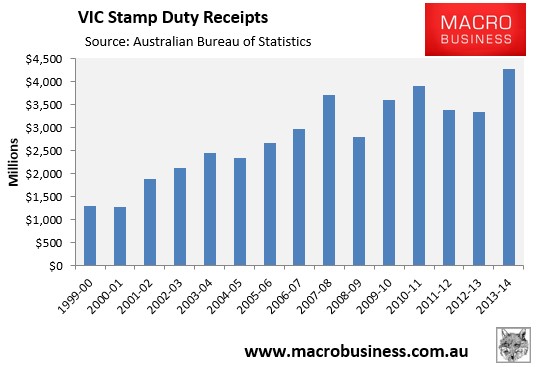
Queensland:
Stamp duty receipts rose by 27% in 2013-14 to $2,403 million, but were still 17% below the 2007-08 peak of $2,912 million:
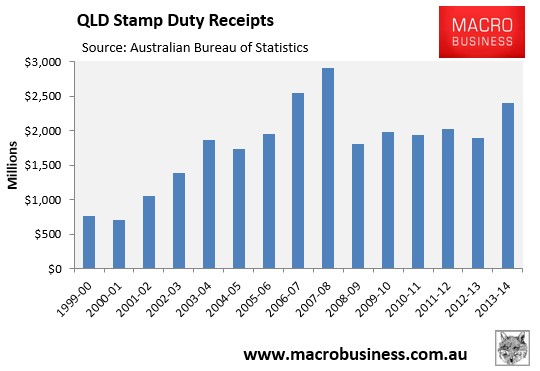
Western Australia:
Stamp duty receipts rose by 10% in 2013-14 to $1,955 million, but were 12% below their 2007-08 peak of $2,243 million:
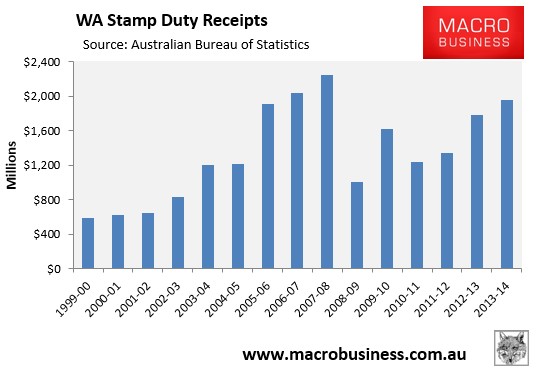
South Australia:
Stamp duty receipts rose by 2% in 2013-14 to $789 million, but were 13% below their 2007-08 peak of $909 million:
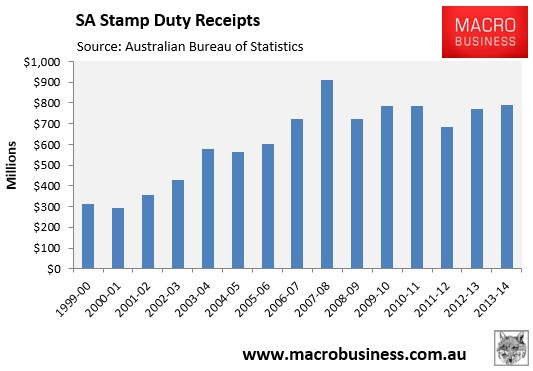
Tasmania:
Stamp duty receipts rose by 11% in 2013-14 to $154 million, but were 22% below their 2007-08 peak of $197 million:
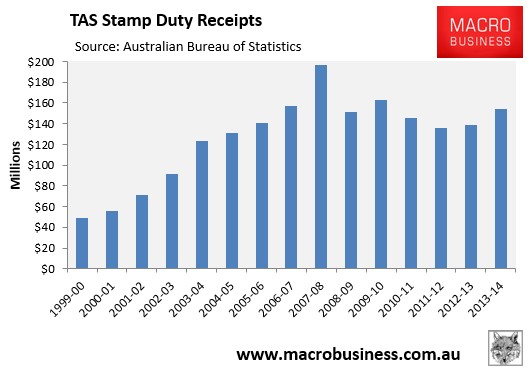
ACT:
Stamp duty receipts fell by 2% in 2013-14 to $227 million, and were 20% below their 2009-10 peak of $283 million:
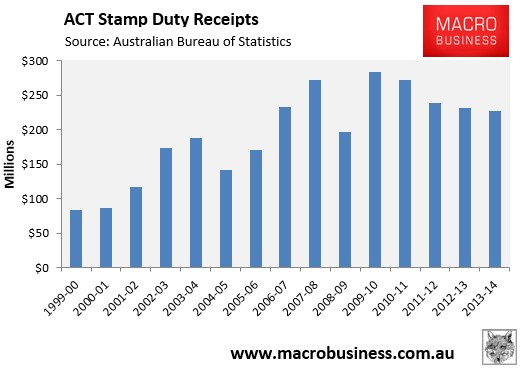
Northern Territory:
Stamp duty receipts jumped by 13% in 2013-14 to an all-time high $142 million:
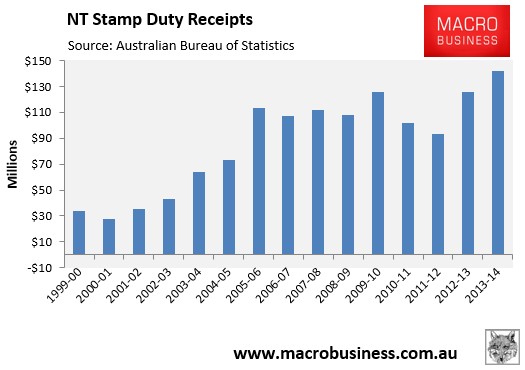
As shown above, it is the key bubble states of New South Wales and Victoria that are the major beneficiaries of the surge in stamp duty receipts. On this point, the next chart is instructive. It shows that both New South Wales and Victoria are claiming a higher share of total stamp duty receipts than suggested by their population sizes, whereas the other jurisdictions (with the exception of Western Australia) receive less:
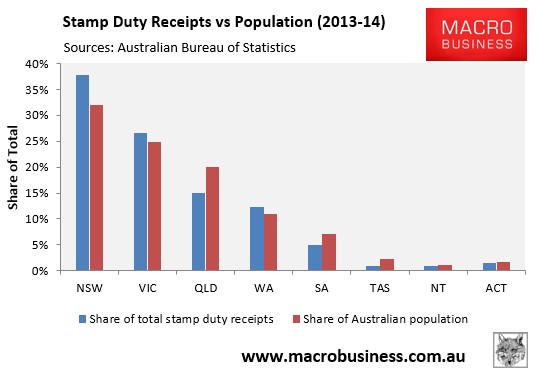
The outlook for stamp duty receipts in 2014-15 remains favourable, and should record another increase on 2013-14. The total number of home sales across Australia have trended up slowly (see next chart), which when combined with ongoing price appreciation, suggests stamp duty receipts will increase at the national level when the 2014-15 tax statistics are released by the ABS this time next year (see next chart).
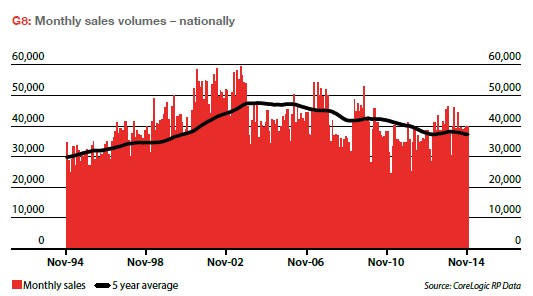
That said, stamp duties are a notoriously volatile source of revenue, and when the property market likely turns down from 2016, Australia’s state and territory governments will experience some pain.
Again, this highlights a benefit from shifting state revenues from stamp duties to land taxes. Apart from being far more equitable and efficient, land taxes are a stable source of revenue (see next chart), providing governments with much greater surety.
